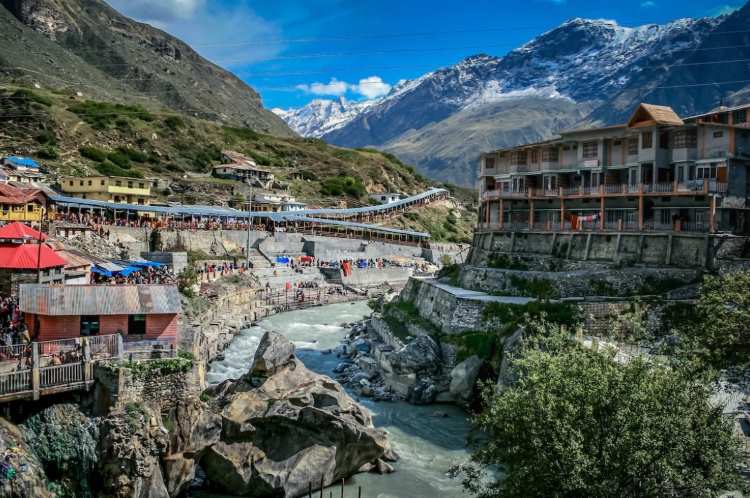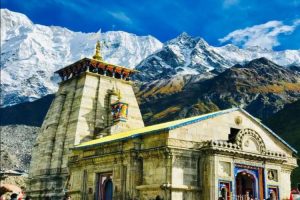
Uttarakhand government’s tourism-based development model: Uttarakhand is gifted with bounties of nature and is well known for religious tourism. The state has also been in the news headlines for its share of environmental disasters in the last one decade. In 2013, Uttarakhand witnessed an unprecedented cloudburst flowed by flash floods in several parts with the Kedarnath valley in Rudraprayag district being the worst hit. In 2021, another flash flood struck the Dhauliganga river and the rock and ice avalanche caused massive damage downstream in the Chamoli district.
Come 2023 and the state is staring at another tragedy – Joshimath, a high-activity town in Chamoli district. The town, considered the gateway to the famous shrine of Badrinath and the starting point of several trekking expeditions, has started sinking. At first glance, nature appears to be the cause behind all these disasters, but one cannot ignore the correlation between these occurrences and the massive destruction of environment.
READ I Cracks in Joshimath point to crisis in Himalayan ecology
Uttarakhand government’s dilemma
The question here is that can Uttarakhand afford to develop its tourism ignoring its environmental fragility. Tourism is a major contributor of revenues to the Uttarakhand government. Religious tourism becomes the natural subcategory of choice as the state is home to several holy shrines, earning it the name Devbhumi or the land of gods.
The Char Dham Yatra connecting Yamunotri, Gangotri, Kedarnath and Badrinath is an important Hindu pilgrimage circuit that attracts huge number of people from the rest of India. Massive investments on infrastructure have been made here after the roads and buildings were washout out in the 2013 floods.

The funding of infrastructure is given a priority by the Union and Uttarakhand governments. However, the concern is that environmental costs of these projects have not been factored in the discussions. It is hard to ignore that all major environmental disasters of the last decade have struck in and around this area. For a state where the tourism industry as a pillar of the economy, meddling with the ecological balance will be counterproductive.
READ I Drying Himalayan springs need urgent attention
The question that comes up is how popular tourist countries like Switzerland have managed massive infrastructural feats in its mountainous areas without having to deal with environment fragility. Research indicates that hazard of earthquakes in Swiss Alps is much lower than in the Himalayas. Most of Uttarakhand comes in Seismic Zone IV while the districts of Rudraprayag, Uttarkashi and Chamoli where the Char Dhams are located are in Zone V of highest seismic activity.
Add to that, areas like the ‘sinking’ Joshimath sit not on hard rock, but on landslide debris. Then, a higher population density in Himalayas in general as compared to Swiss Alps means higher pressure on the mountain range. Each infrastructure project demands in-depth assessment.
Swiss Alps, like the Himalayas, vary in geology in its different stretches. Therefore, for constructing the world’s longest tunnel in Switzerland, several in-depth studies were conducted to manage the various challenges. Rock mechanics and geologists came together to ascertain the best route and the most-suited tunnel making methods were used.
Landslides are common in several areas of Uttarakhand with some events more destructive than others. Cloud burst events due to climate change coupled with massive construction of roads, dams and tunnels without proper study of rocks in that area can trigger more problems. Drying up of water resources due to tunnelling is affecting water supply for local residents for drinking, household activities and agriculture.
The fact that administration has now halted road and power plant construction work in Joshimath can be construed as a delayed realisation of the futility of construction methods. Need of the hour is to look for customised, innovative ways for developing infrastructure and tourism in general for the long-term development of the state and its people. This becomes all the more important in the wake of climate change that will magnify risks.
Lessons can be taken from around the world to manage tourism by limiting number of visitors to certain areas and building environmentally friendly and climate-resilient infrastructure. In that context, declaring of certain areas as eco-sensitive zones (ESZs) has already started by the Uttarakhand government. This can be a good strategy to cushion these areas from unbridled human activity and to protect the natural habitat of several unique and endangered species of plants and animals and ecological systems like forests, glaciers, and wetlands.
There is also a constant need to monitor the changing ecological parameters like glacial retreat, to develop early warning systems, and to make reinforcing infrastructure as a part of climate adaptation plans. Education and awareness programmes for tourists and local communities are critical to minimise damage to environment and to promote use of natural resources in a sustainable way.
Another important thing to realise is that India has relatively weaker implementation of laws and best practices when it comes to deforestation, animal grazing, and illegal encroachments. Each tourism development plan must include provisions of managing waste, pollution, and stress on existing water and natural resources.
Lastly, big infrastructure projects must mandatorily be backed by credible environmental impact assessments. Dams are a source of hydroelectric power, a clean form of energy and hence are eco-conserving. However, if the same dams are in geologically unstable areas as several under-construction dams in Uttarakhand, then the same structures not only are prone to damage but their very construction and presence further stress the geology. A small natural trigger can cause aggravated loss of life and property. [9]
To conclude, it is imperative to understand that the state stands to benefit when both environment safety and development needs are taken care of. All projects undertaken after acknowledging the sensitive and unique geology of the hilly state and ascertaining the environmentally safest way of developing infrastructure are bound to deliver long-term returns.
(Pratima Pandey is an economist, and environmental policy expert at Infinite Sum Modelling.)
